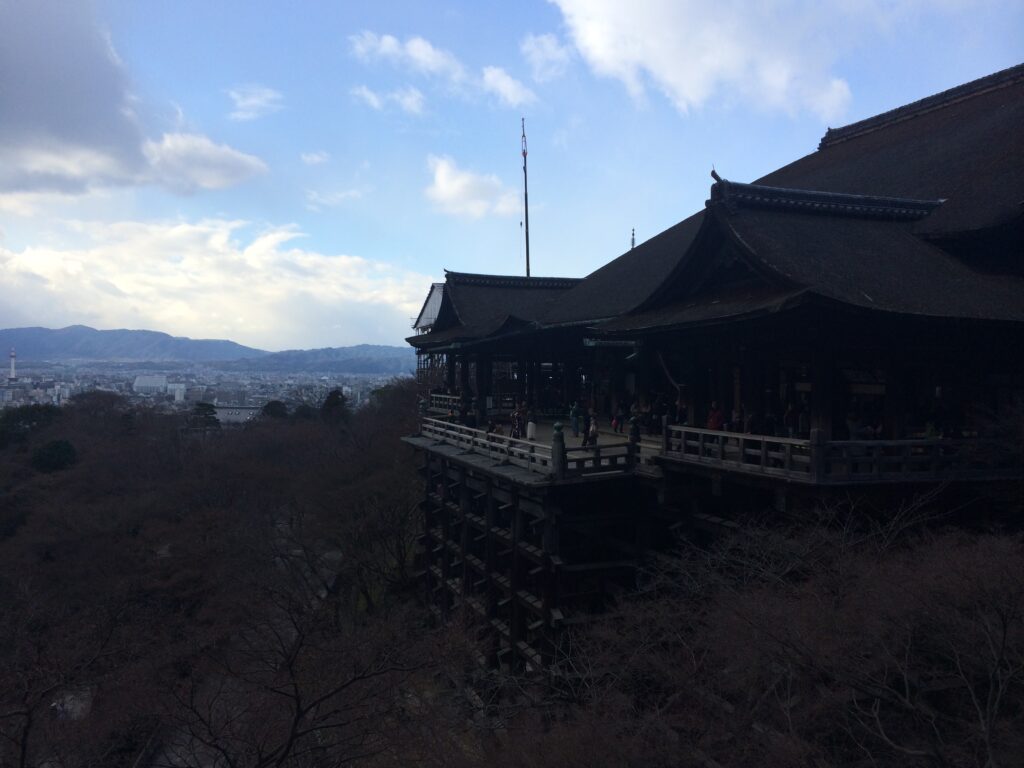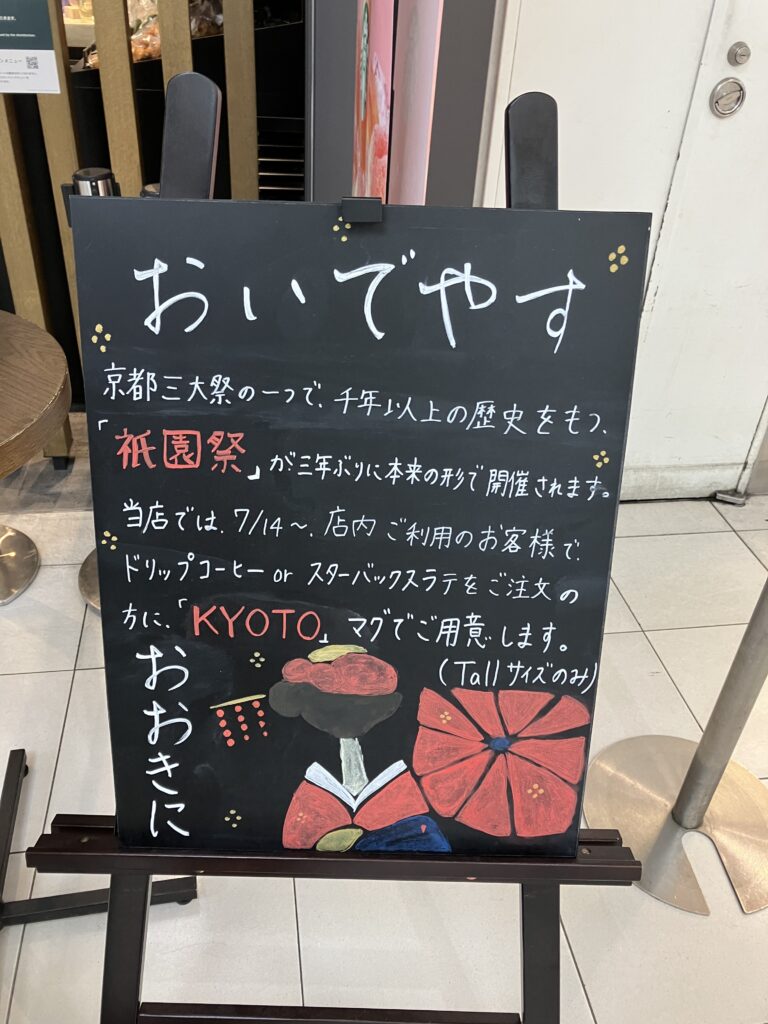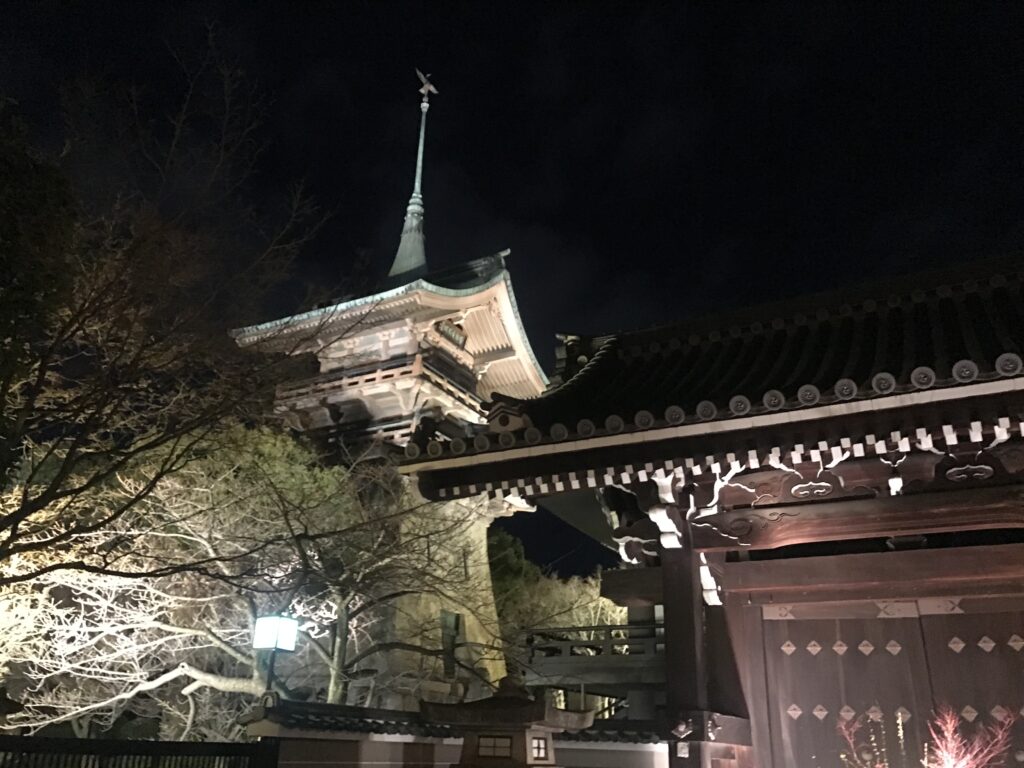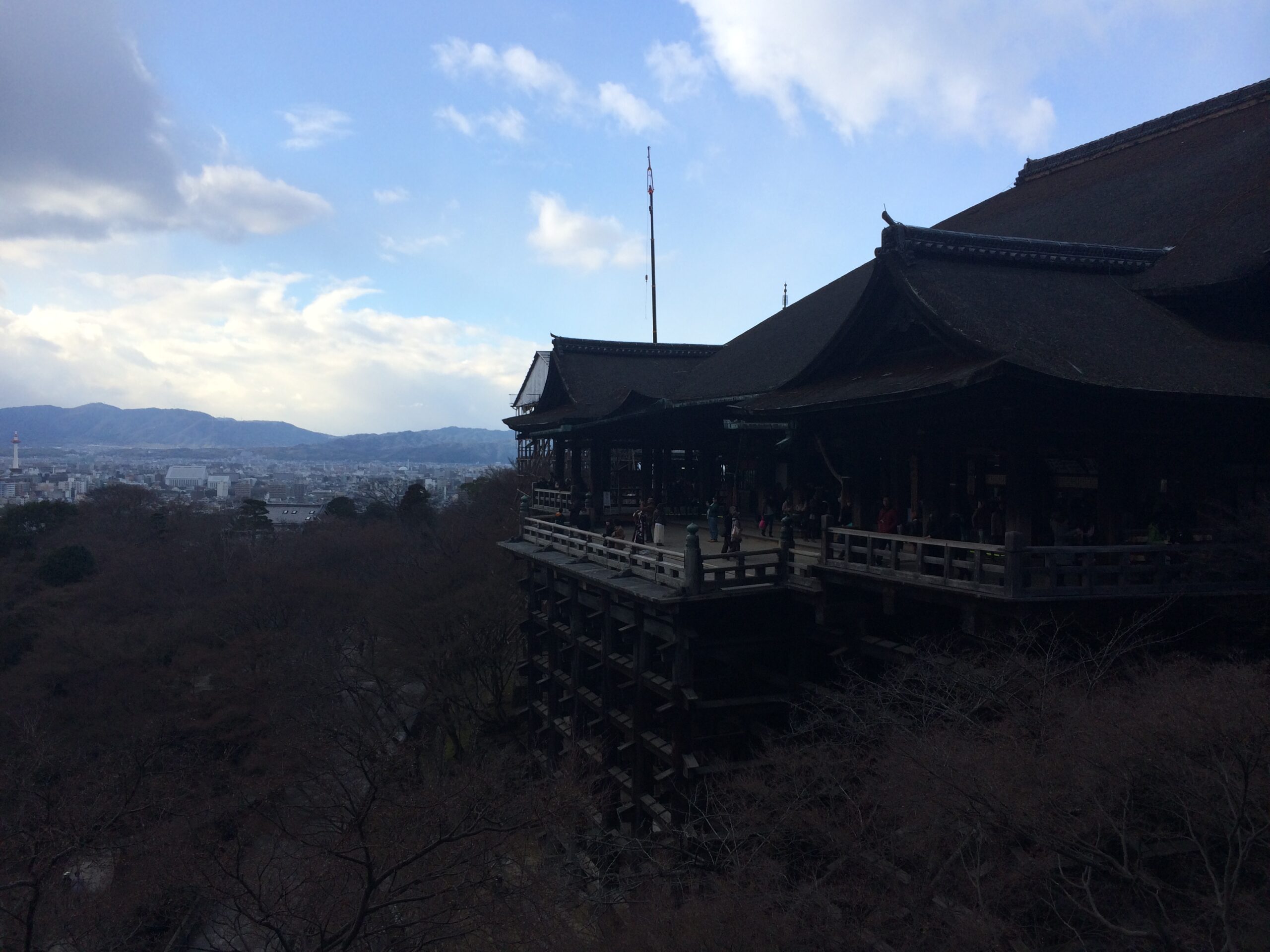
I. Introduction
- Overview of Kyoto as a travel destination
- Brief history of Kyoto
II. Top Attractions
- Introduction to Kyoto’s top attractions
- Detailed descriptions of the most popular attractions, including temples, shrines, museums, and more
- Insider tips for visiting each attraction, including best times to visit, how to get there, and what to expect
III. Festivals and Events
- Introduction to Kyoto’s festivals and events
- Detailed descriptions of the most popular festivals, including history and traditions
- Insider tips for attending each festival, including best times to go, how to get there, and what to expect
IV. Food and Drink
- Introduction to Kyoto’s culinary scene
- Descriptions of Kyoto’s most famous dishes and local specialties
- Recommendations for the best restaurants, cafes, and bars in Kyoto
V. Hidden Gems
- Introduction to Kyoto’s hidden gems
- Descriptions of lesser-known attractions, such as hidden temples and gardens, and off-the-beaten-path neighborhoods
- Insider tips for visiting each hidden gem, including how to get there and what to expect
VI. Walking Tours
- Introduction to self-guided walking tours of Kyoto
- Detailed descriptions of the best walking tours, including top sights and neighborhoods to explore
- Insider tips for each walking tour, including suggested routes and places to eat and drink
VII. Shopping
- Introduction to Kyoto’s shopping scene
- Descriptions of Kyoto’s best shopping districts, markets, and stores
- Recommendations for the best places to buy traditional handicrafts, souvenirs, and more
VIII. Accommodation
- Introduction to Kyoto’s accommodation options
- Descriptions of Kyoto’s best hotels, ryokans, and other accommodations
- Recommendations for the best places to stay in Kyoto based on budget, location, and amenities
IX. Day Trips
- Introduction to day trips from Kyoto
- Descriptions of the best day trips, including nearby towns and attractions
- Insider tips for each day trip, including transportation options and what to see and do
X. Culture and History
- Introduction to Kyoto’s cultural and historical heritage
- Descriptions of key cultural and historical topics, such as geisha culture, samurai history, and the history of Kyoto’s temples and shrines
- Recommendations for the best places to learn about Kyoto’s culture and history
XI. Seasons
- Introduction to Kyoto’s beauty throughout the seasons
- Descriptions of Kyoto’s highlights in each season, from cherry blossoms in spring to autumn leaves in fall
- Insider tips for experiencing Kyoto’s seasons, including the best times to go and what to expect
XII. Conclusion
- Final thoughts on visiting Kyoto as a travel destination
- Additional resources for planning a trip to Kyoto, including websites and books for further reading.


Kyoto, a city located in the central part of Japan, is one of the most popular travel destinations in the country. This ancient city is known for its rich cultural heritage, stunning architecture, and natural beauty. In this web content, we will explore the following structure to help you plan your trip to Kyoto.
I. Introduction In this section, we will give you an overview of Kyoto as a travel destination and provide you with a brief history of the city. You will learn about Kyoto’s significance as the former capital of Japan and its cultural and historical importance.
II. Top Attractions In this section, we will introduce you to Kyoto’s top attractions, including temples, shrines, museums, and more. We will provide you with detailed descriptions of each attraction, insider tips for visiting them, and information on the best times to visit, how to get there, and what to expect.
III. Festivals and Events Kyoto is famous for its festivals and events, and in this section, we will introduce you to the most popular ones. We will provide you with detailed descriptions of the festivals, including their history and traditions. You will also find insider tips for attending each festival, including the best times to go, how to get there, and what to expect.
IV. Food and Drink Kyoto has a rich culinary scene, and in this section, we will introduce you to the city’s most famous dishes and local specialties. You will find recommendations for the best restaurants, cafes, and bars in Kyoto, so you can experience the city’s food culture to the fullest.
V. Hidden Gems Kyoto has many hidden gems that are not as well-known as its popular attractions, and in this section, we will introduce you to them. You will learn about hidden temples and gardens, off-the-beaten-path neighborhoods, and insider tips for visiting each one, including how to get there and what to expect.
VI. Walking Tours If you enjoy exploring cities on foot, Kyoto has some fantastic walking tours that will take you to the top sights and neighborhoods. In this section, we will introduce you to the best walking tours in Kyoto, provide you with detailed descriptions of each one, and insider tips for suggested routes and places to eat and drink along the way.
VII. Shopping Kyoto has a vibrant shopping scene, and in this section, we will introduce you to the best shopping districts, markets, and stores. You will find recommendations for the best places to buy traditional handicrafts, souvenirs, and more, so you can bring a piece of Kyoto back home with you.
VIII. Accommodation In this section, we will introduce you to Kyoto’s accommodation options, including the best hotels, ryokans, and other accommodations. You will find descriptions of each one, including their location, budget, and amenities, so you can choose the best place to stay in Kyoto for your needs.
IX. Day Trips Kyoto is surrounded by many nearby towns and attractions that are perfect for day trips. In this section, we will introduce you to the best day trips from Kyoto, provide you with descriptions of each one, and insider tips for transportation options and what to see and do.
X. Culture and History Kyoto has a rich cultural and historical heritage, and in this section, we will introduce you to the key cultural and historical topics, such as geisha culture, samurai history, and the history of Kyoto’s temples and shrines. You will find recommendations for the best places to learn about Kyoto’s culture and history, so you can deepen your understanding of the city.
XI. Seasons Kyoto is beautiful throughout the year, and in this section, we will introduce you to Kyoto’s highlights in each season, from cherry blossoms

Kyoto’s significance as a cultural and historical center is also reflected in its people and traditions. The city is known for its geisha and maiko, who are traditional female entertainers trained in the arts of music, dance, and conversation. Visitors to Kyoto can witness their performances at teahouses and entertainment establishments in the Gion district, one of Kyoto’s most famous areas.
Another important aspect of Kyoto’s culture is its emphasis on craftsmanship and artisanal traditions. The city is home to numerous workshops and studios where visitors can learn about traditional crafts such as pottery, woodworking, and textiles. Many of these crafts have been passed down through generations and are still practiced today, preserving Kyoto’s rich cultural heritage.
Despite its reputation as a historical city, Kyoto is also a hub of innovation and technology. The city is home to several universities and research institutions, and many companies in fields such as electronics, biotechnology, and gaming are based in Kyoto.
In terms of transportation, Kyoto is easily accessible from Tokyo and other major cities in Japan by train, bus, and airplane. Once in Kyoto, visitors can explore the city by foot, bicycle, or public transportation, including buses and trains.
Overall, Kyoto is a city that offers something for everyone, from history and culture to cuisine and entertainment. Its rich heritage and modern amenities make it a unique and unforgettable destination that should be on every traveler’s list.
One of the most iconic features of Kyoto is its traditional architecture, which is characterized by wooden buildings, tiled roofs, and intricate carvings and decorations. Many of the city’s historic buildings have been carefully preserved and restored, allowing visitors to experience Japan’s traditional architecture firsthand.
Some of the must-see sights in Kyoto include the Fushimi Inari Taisha shrine, famous for its thousands of torii gates that wind through the forested hillside; the Kinkaku-ji temple, also known as the Golden Pavilion, a stunning temple covered in gold leaf; and the Kiyomizu-dera temple, which offers panoramic views of the city from its hilltop location.
Another popular attraction in Kyoto is the Arashiyama district, a scenic area on the outskirts of the city known for its bamboo groves, picturesque bridges, and tranquil temples. Visitors can also take a boat ride on the Hozu River or hike up the nearby Mount Atago for stunning views of the surrounding landscape.
Kyoto is also famous for its hot springs, or onsen, which are popular with both tourists and locals. Some of the best onsen in Kyoto are located in the nearby town of Kinosaki, which is easily accessible by train from Kyoto.
Overall, Kyoto is a city that offers a unique blend of history, culture, nature, and modernity. Whether you’re interested in exploring Japan’s traditional arts and crafts, experiencing its natural beauty, or sampling its world-famous cuisine, Kyoto has something for everyone.
Visitors to Kyoto can also experience the city’s vibrant and diverse nightlife. The city has a wide variety of restaurants, bars, and clubs that cater to all tastes and budgets, from traditional izakaya (Japanese-style pubs) to upscale cocktail bars and nightclubs. Many of these establishments are located in the downtown areas of Kyoto, such as Gion, Pontocho, and Kawaramachi.
For those interested in shopping, Kyoto offers a unique shopping experience that combines traditional crafts with modern design. The city is home to numerous shopping districts, including the Nishiki Market, a bustling covered market that sells a wide variety of food and traditional crafts; and the Kyoto Station Building, a modern shopping complex that features a variety of local and international brands.
Kyoto is also a city that celebrates its festivals and traditions. Throughout the year, the city hosts numerous festivals and events that showcase its rich cultural heritage, including the Aoi Matsuri, a traditional procession that dates back to the 6th century; the Jidai Matsuri, a festival that celebrates Kyoto’s history and culture; and the Gion Matsuri, one of Japan’s largest and most famous festivals.
In addition to its festivals, Kyoto is also home to numerous museums and art galleries that showcase the city’s cultural and artistic heritage. Some of the best-known museums in Kyoto include the Kyoto National Museum, which houses a wide collection of Japanese art and artifacts; and the Museum of Kyoto, which offers exhibitions on the city’s history and culture.
Overall, Kyoto is a city that is rich in history, culture, and traditions, but also one that embraces modernity and innovation. Its unique blend of ancient and modern makes it a destination that offers something for everyone, whether you’re interested in exploring Japan’s traditional culture, enjoying its natural beauty, or experiencing its vibrant nightlife and modern amenities.
Finally, Kyoto is also known for its food, which is considered some of the best in Japan. The city’s cuisine is known for its emphasis on local and seasonal ingredients, as well as its use of traditional cooking techniques and presentation.
Some of the must-try dishes in Kyoto include kaiseki, a traditional multi-course meal that features a variety of small dishes that showcase the flavors and textures of seasonal ingredients; tofu, which is a specialty of Kyoto and can be found in a variety of dishes, from soup to dessert; and matcha, a type of powdered green tea that is used in a variety of sweets and desserts.
Kyoto is also famous for its street food, which can be found at food stalls and markets throughout the city. Some popular street food items include takoyaki, small balls of fried batter filled with octopus; okonomiyaki, a savory pancake filled with a variety of ingredients; and yatsuhashi, a traditional sweet made from rice flour and cinnamon.
In conclusion, Kyoto is a city that is rich in history, culture, traditions, and cuisine. Its unique blend of ancient and modern makes it a destination that offers something for everyone, whether you’re interested in exploring Japan’s traditional culture and arts, enjoying its natural beauty, experiencing its vibrant nightlife and modern amenities, or savoring its delicious food. A visit to Kyoto is truly an unforgettable experience that will leave you with memories to last a lifetime.
If you’re planning a trip to Kyoto, there are a few things to keep in mind. Firstly, the city is a popular tourist destination, so it can get crowded during peak season, which is usually in the spring and fall when the cherry blossoms and autumn leaves are in full bloom. To avoid the crowds, consider visiting during the quieter months of January and February, or during the summer when the city hosts a variety of festivals and events.
Secondly, Kyoto is a city that is best explored on foot or by bicycle, as many of its sights and attractions are located within walking or cycling distance of each other. Bicycles can be rented from numerous shops throughout the city, and many of the major tourist sites have bicycle parking areas.
Finally, it’s important to respect the local customs and traditions when visiting Kyoto. This includes removing your shoes when entering temples and other traditional buildings, dressing appropriately (i.e. covering your shoulders and knees) when visiting religious sites, and being respectful of local customs and etiquette.
In conclusion, Kyoto is a city that offers a unique and unforgettable experience for travelers. Its rich history, culture, traditions, and cuisine make it a destination that is well worth a visit, whether you’re interested in exploring Japan’s traditional arts and crafts, experiencing its natural beauty, or savoring its delicious food. With its unique blend of ancient and modern, Kyoto truly has something for everyone.
When it comes to getting around Kyoto, there are several transportation options available. The city has an extensive bus and subway system that connects all of its major attractions and
neighborhoods, making it easy to get around. Visitors can purchase a Kyoto City Bus and Subway Pass for unlimited use of both modes of transportation for a designated period of time.
Another popular transportation option in Kyoto is the taxi. Taxis are readily available throughout the city, and can be hailed from designated taxi stands or by calling a taxi company. However, taxis in Kyoto can be expensive, so it’s important to keep that in mind when planning your travel budget.
For those who prefer a more eco-friendly mode of transportation, Kyoto also offers bicycle rentals. Bicycles can be rented from numerous shops throughout the city, and many of the major tourist sites have bicycle parking areas. Cycling is a great way to explore Kyoto’s neighborhoods and backstreets, and also allows visitors to experience the city at their own pace.
In conclusion, Kyoto is a city that offers a variety of transportation options for travelers, whether you prefer to use public transit, taxis, or bicycles. With its extensive bus and subway system, along with its numerous taxi stands and bicycle rental shops, getting around Kyoto is easy and convenient. By choosing the transportation option that best suits your needs, you’ll be able to explore all that this amazing city has to offer.
When it comes to accommodations in Kyoto, visitors have a wide range of options to choose from. The city has everything from luxury hotels and ryokans (traditional Japanese inns) to more affordable hostels and guesthouses.
If you’re looking for a unique and traditional Japanese experience, staying at a ryokan is highly recommended. Ryokans are typically located in quiet and peaceful neighborhoods, and offer a chance to experience Japanese hospitality and culture firsthand. Guests are typically provided with traditional Japanese-style rooms, complete with tatami mats and futon beds, and are served delicious meals made with seasonal and locally sourced ingredients.
For those on a budget, Kyoto also has numerous hostels and guesthouses that offer affordable accommodations. These options are ideal for travelers who are looking to save money on lodging, and are also a great way to meet fellow travelers from around the world.
Regardless of your budget or travel style, it’s important to book your accommodations in advance, especially during peak season. Kyoto is a popular destination, and accommodations can fill up quickly, so be sure to book early to secure your preferred accommodations.
In conclusion, Kyoto offers a wide range of accommodations to suit all budgets and travel styles. From luxury hotels and ryokans to affordable hostels and guesthouses, there’s something for everyone in this amazing city. By booking your accommodations in advance, you’ll be able to find the perfect place to stay and make the most of your time in Kyoto.
One of the main draws of Kyoto is its incredible food culture. Known as the cultural capital of Japan, Kyoto is home to some of the country’s most renowned chefs and restaurants, offering a unique and unforgettable culinary experience.
One of the most famous dishes in Kyoto is kaiseki ryori, a traditional multi-course meal that features a variety of small dishes, each highlighting the flavors and textures of seasonal ingredients. Kaiseki ryori is typically served in ryokans and high-end restaurants, and is considered a must-try experience for any food lover visiting Kyoto.
Another popular food in Kyoto is obanzai, a type of home-style cooking that features simple, yet delicious dishes made with locally sourced ingredients. Obanzai can be found at restaurants throughout the city, and is a great way to experience Kyoto’s traditional food culture.
Of course, no visit to Kyoto is complete without trying some of the city’s famous sweets and snacks. Kyoto is known for its wagashi, traditional Japanese sweets that are typically made with bean paste and mochi (sweet rice cake). Popular Kyoto wagashi include yatsuhashi, a cinnamon-flavored mochi, and matcha-flavored sweets made with Kyoto’s famous green tea.
In conclusion, Kyoto’s food culture is a major highlight of any visit to the city. From traditional kaiseki ryori to home-style obanzai and delicious wagashi sweets, Kyoto offers a unique and unforgettable culinary experience. Be sure to try some of Kyoto’s famous foods during your visit, and experience the flavors and traditions of this amazing city.
Kyoto is also a city with a rich and diverse shopping scene. The city is home to numerous shopping districts, from the traditional markets of Nishiki Market and Teramachi Street to the modern shopping malls of Shijo Street and Kyoto Station.
One of the most unique shopping experiences in Kyoto is visiting the city’s many specialized shops. Kyoto is known for its traditional crafts, such as ceramics, textiles, and lacquerware, and visitors can find shops throughout the city selling these handmade goods. Other specialty shops in Kyoto include matcha tea shops, incense shops, and kimono shops.
For those looking for more modern shopping experiences, Kyoto has several large shopping malls, including Kyoto Station, which features over 100 shops and restaurants, and AEON Mall Kyoto, which has over 170 shops and a cinema.
Finally, no trip to Kyoto would be complete without visiting the city’s many souvenir shops. Kyoto is known for its traditional crafts and foods, and visitors can find a wide range of souvenirs, from handmade ceramics and textiles to matcha-flavored sweets and snacks.
In conclusion, Kyoto’s shopping scene offers a diverse range of options, from traditional markets and specialized shops to modern shopping malls and souvenir shops. By exploring the city’s various shopping districts, visitors can find unique and unforgettable souvenirs, as well as experience the city’s rich culture and traditions.
Kyoto is also known for its stunning natural beauty, with numerous parks, gardens, and natural attractions throughout the city. One of the most famous natural attractions in Kyoto is Arashiyama, a picturesque district located on the outskirts of the city. Arashiyama is known for its scenic bamboo forest, as well as its numerous temples and shrines.
Another popular natural attraction in Kyoto is the Philosopher’s Path, a scenic walking trail that follows a canal lined with cherry trees. The path is especially beautiful in the spring when the cherry blossoms are in bloom, and is a popular spot for hanami (cherry blossom viewing).
Kyoto is also home to several beautiful gardens and parks, including the famous Kyoto Imperial Palace Park, which is known for its stunning cherry blossom trees, and the Shugakuin Imperial Villa, a sprawling garden that features a variety of different landscapes and scenic viewpoints.
For those looking for a more active outdoor experience, Kyoto also has several hiking trails and mountains, including Mount Daimonji and Mount Hiei, which offer incredible views of the city and surrounding countryside.
In conclusion, Kyoto’s natural beauty is one of the city’s main attractions, and visitors can experience this beauty by exploring the city’s numerous parks, gardens, and natural attractions. From the scenic bamboo forest of Arashiyama to the cherry blossoms of the Philosopher’s Path, Kyoto’s natural beauty is sure to leave a lasting impression on any visitor.



Comments